Unboxing Package full of Lumiere’s legacy

A few days ago an interesting package arrived at my door. It turns out it was sent to me by a very friendly guy from Paris, France who is a collector of old photographic materials. Right around Christmas we have been discussing through messenger about my work with old photographic techniques especially dry plates. At the end of this discussion he told me that he might have something for me and all I have to do is give him my address. All he said was that I will probably have a better use of it than him.
Because there was a madhouse in post offices during the holidays it took the package three weeks to arrive in Slovenia. When I first saw it I was surprised by its size because I honestly expected it to be much smaller. I thought he would send me a book or some film. Instead I needed both hands to carry it to my container studio / darkroom. From the size and weight of it I knew it was not just some film but much more, so before I started opening it I also set up a camera to record the unboxing. When I opened the first envelope and looked into it all I saw three smaller packages.
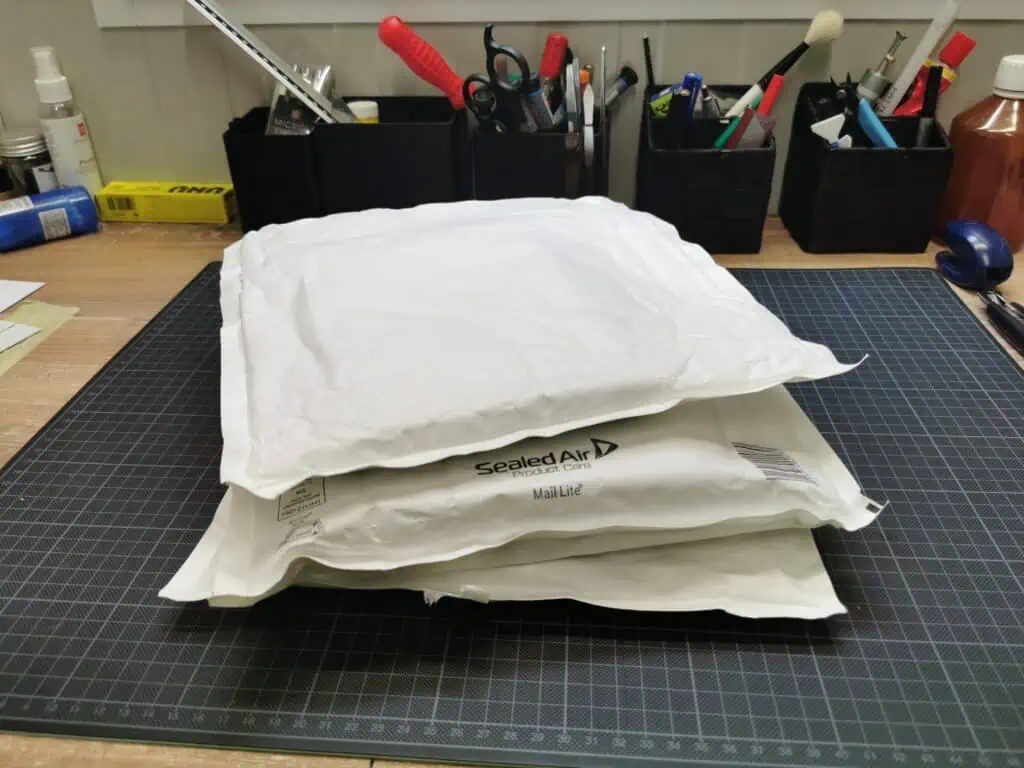
In the first package I opened there were two vintage 4×5 film holders. It turned out they were completely made out of wood which is impressive. I don’t know the brand or the exact year of manufacturing but knowing that flexible black and white film started getting popular with “Safety Film” released by kodak in 1908 I would say they are from the early 20th century. At the moment I am designing my very own 3d printable 4×5 glass dry plate holder so I observed these vintage holders in detail. Design is very similar to the more modern film holders, the only difference I noticed was a light trap for the dark slide. Modern holders use metal spring with some black fabric that closes the slit when a dark slide is pulled out. On the other hand vintage holder seems to be using a simple strip of black felt that is squished with an inserted dark slide and expands when it’s taken out. This knowledge will definitely help me with my own design as the main issue is keeping the light out.
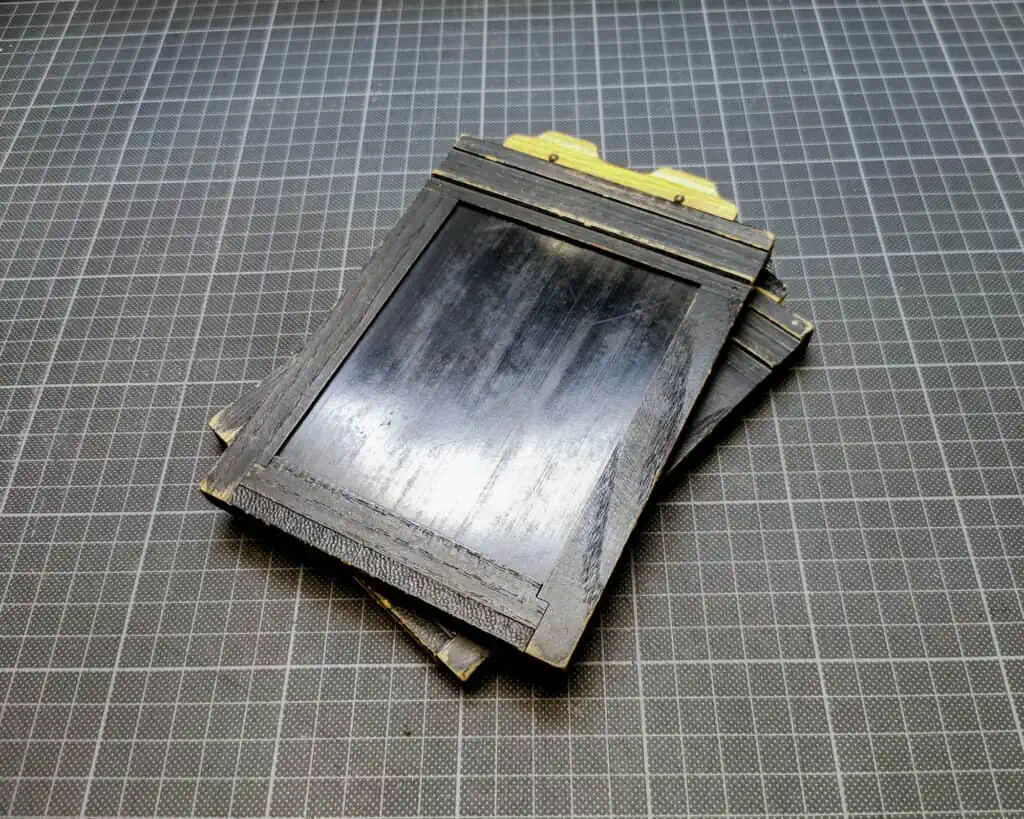
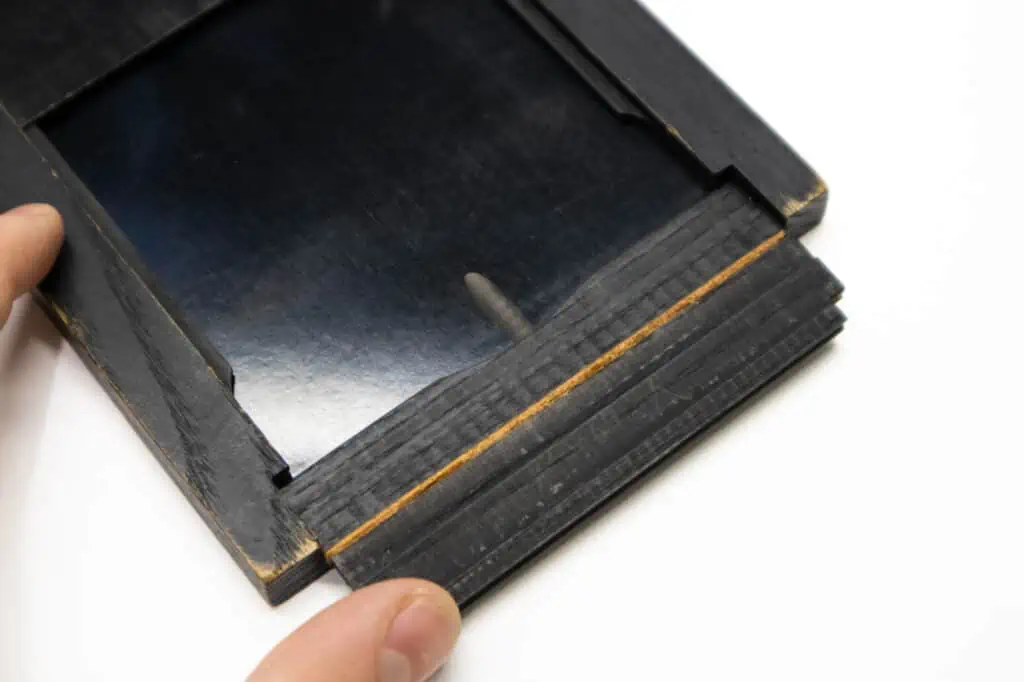
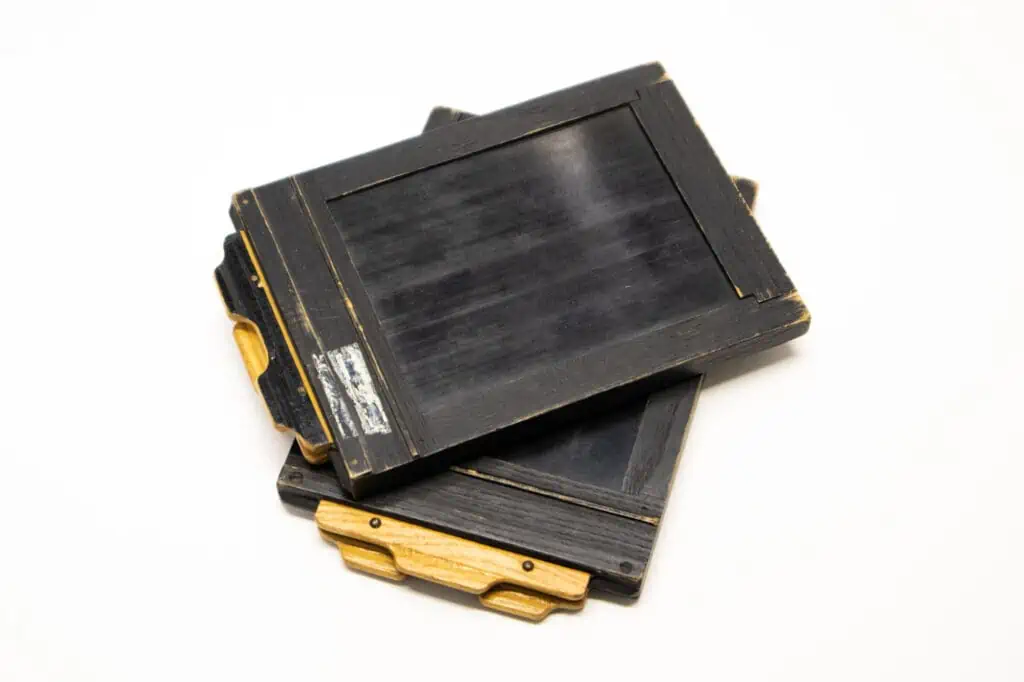
I went on by opening the second package which was bigger and thicker so I thought it has to be a book of some sort. After cutting the envelope and looking inside I just couldn’t believe my eyes. It was a box of dry-plates from the 19th century made by the famous Lumiere Brothers. Auguste and Louis Lumiere were truly masterminds! They were first to make movies by using still images and they take credit for many other important inventions in photography. One of the inventions is the so-called Lumieres “blue plate” that changed the photographic world of the time. Before most of the plates used wet emulsions which meant you needed a darkroom during preparation as well as immediately after exposing the plate. Lumiere plates reduced the darkroom time significantly and from there on their business greatly increased. By 1890 they were producing around 15 million plates per year making them the biggest dry plate manufacturer in Europe. The technique remained the same until today and the emulsion is very similar to the one I use for my dry plates.
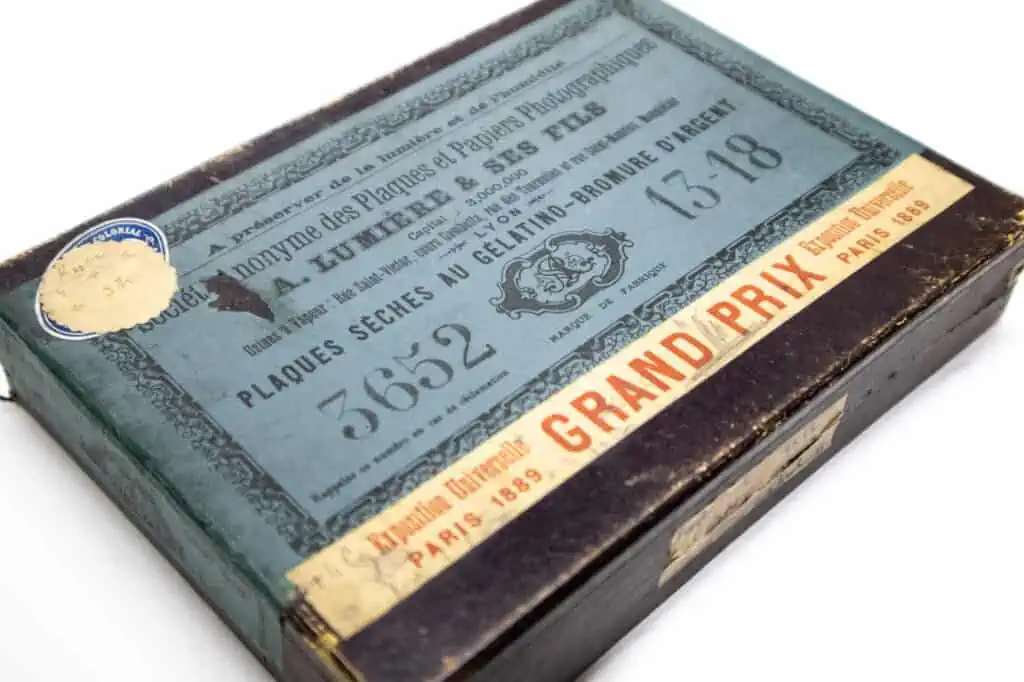
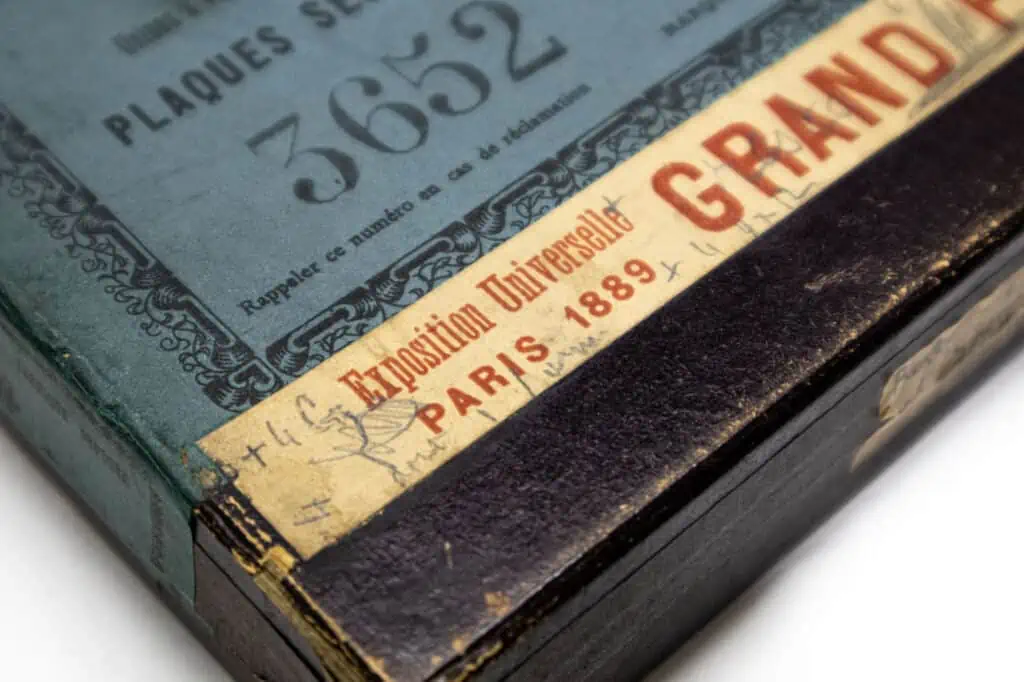
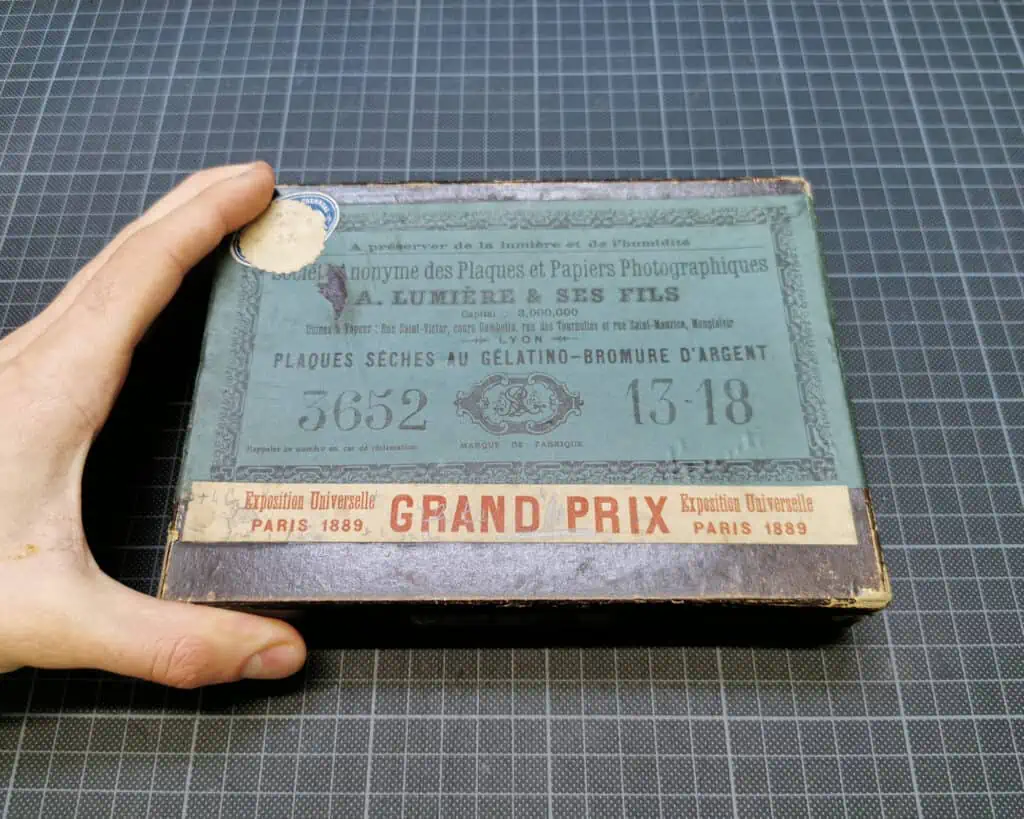
I would date the box in either the late 19th or early 20th century so yeah they are very old. Size of the plates in the box is 13x18cm (5,12in x 709in) which means I will have to make a custom film holder as well as build a bigger camera if I want to shoot these plates. First off all I need to get into the darkroom and open the box to see how many plates are inside and what their condition is. I can definitely expect a certain degree of fog but I hope I will get an image out of it. If not this box is still an amazing piece of history to showcase on a shelf of any early photography enthusiast.
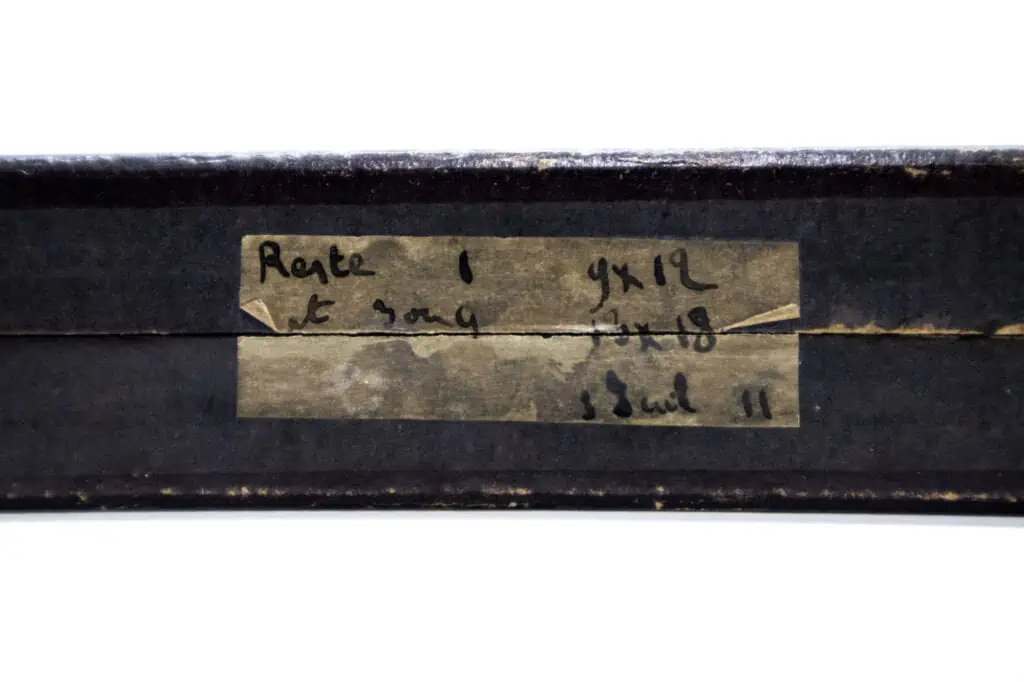
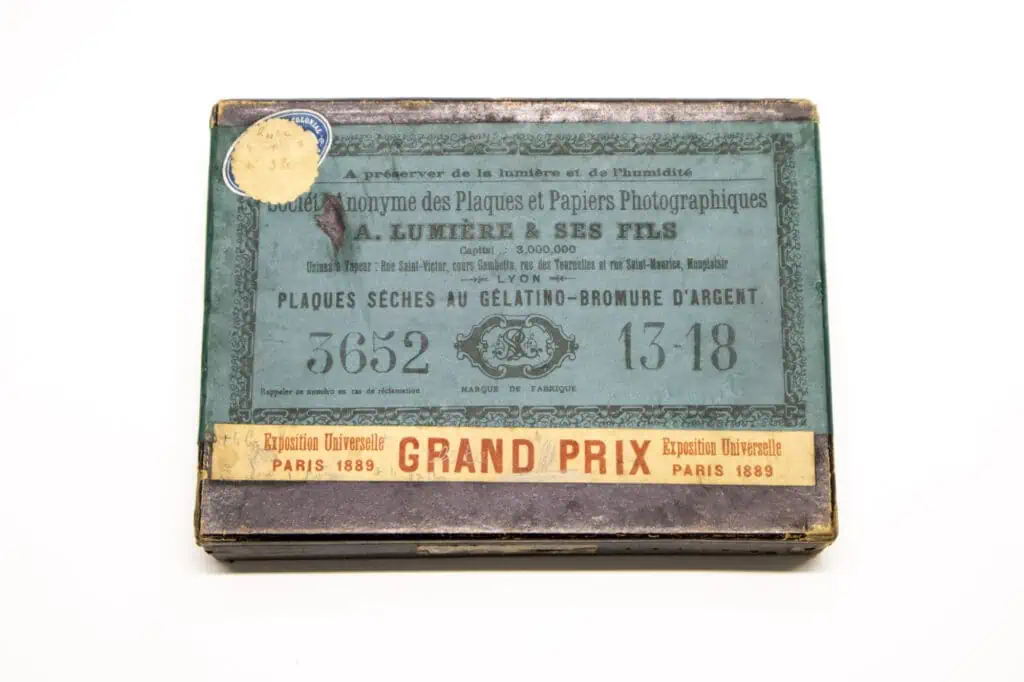
Before moving onto the last package I advise you to hold on to your seat because you might get blown away by the content. Last package had a similar feel to the second one but it seemed a bit thinner. When I pulled the content out my heart just stopped for a few seconds and I got all red in the face. Never in my wildest dreams I could imagine anyone sending me the original Autochrome box! After a few deep breaths I took a closer look. If anyone reading this is not familiar with Autochromes they are yet another invention of Lumiere Brothers. To be exact Autochromes are the first commercially available colour photography techniques that got patented in 1903 and were produced between 1907-1930s.
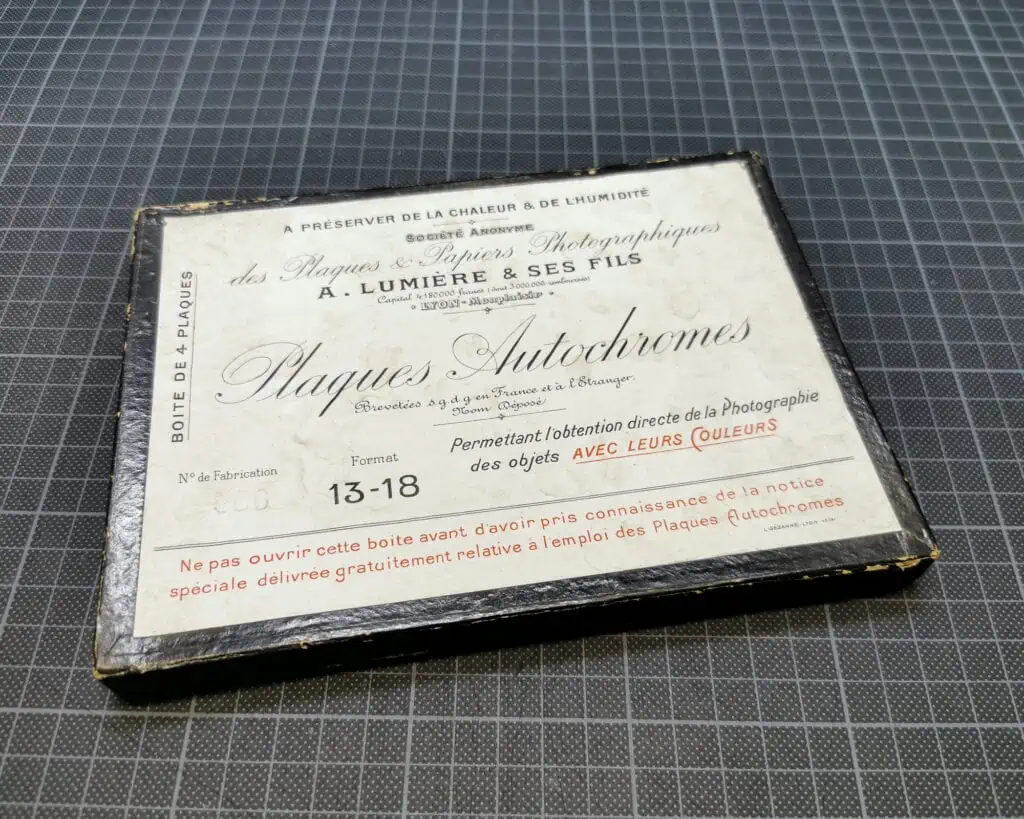
Main component of the plate is a colour screen which is made from potato starch coloured into three colours red-orange, green and blue-violet. Starch is mixed together making colour dust which is then dusted on the glass plate coated with an adhesive layer. Screen is then pressed, protected with varnish, dried, and coated with panchromatic emulsion. When shooting the plate is turned emulsion side facing away from the lens so the light first gets filtered thru the colour screen and then makes an imprint on the emulsion. With all the layers exposure times usually run into minutes. After making the shot you are only halfway there as you need to develop the plate not to the negative but to direct positive (VIDEO). When the plate is developed and light is shined through it the positive bw image works as a sieve for the colour screen letting more or less light thru each of the coloured starch particles. With the help of additive colour mixing the colour image appears. This principle can be found in all of the modern RGB screens like monitors, tvs, phones… So yeah it’s quite a remarkable technique!
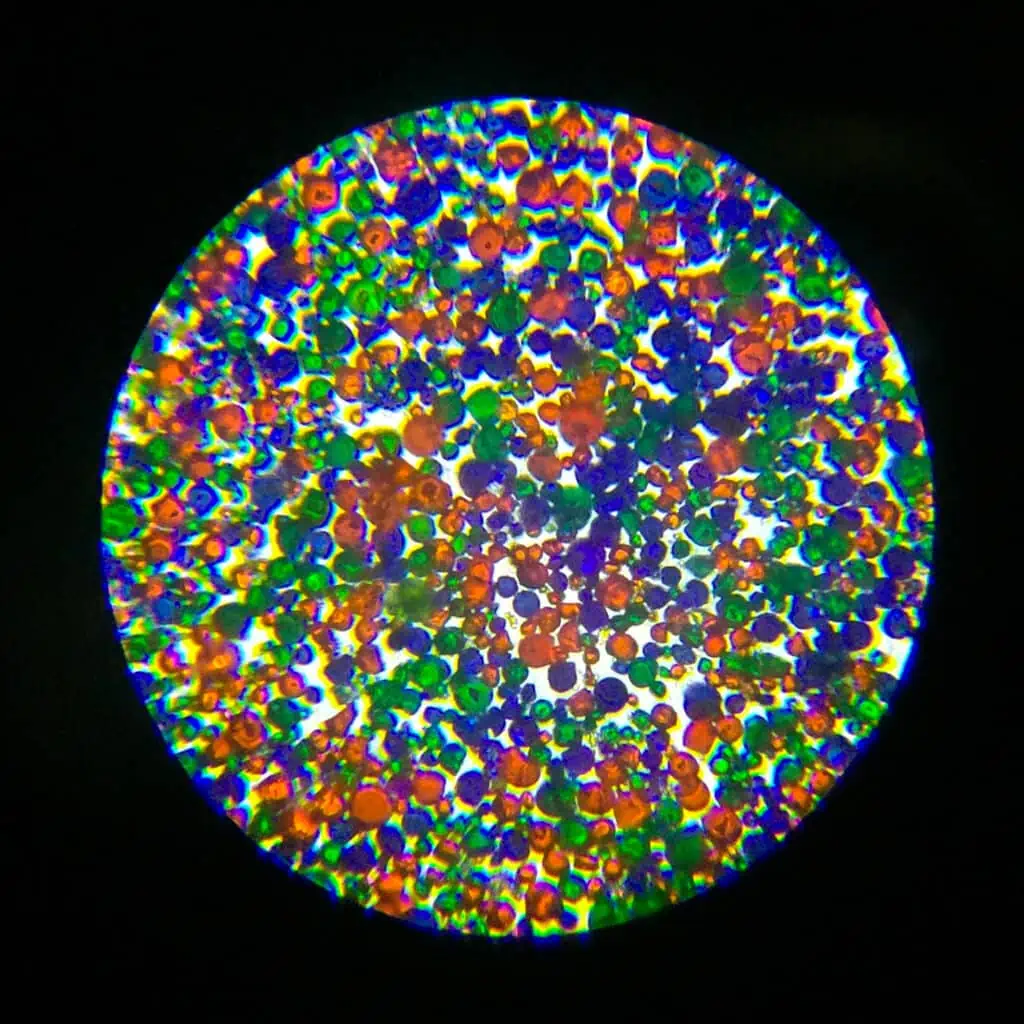
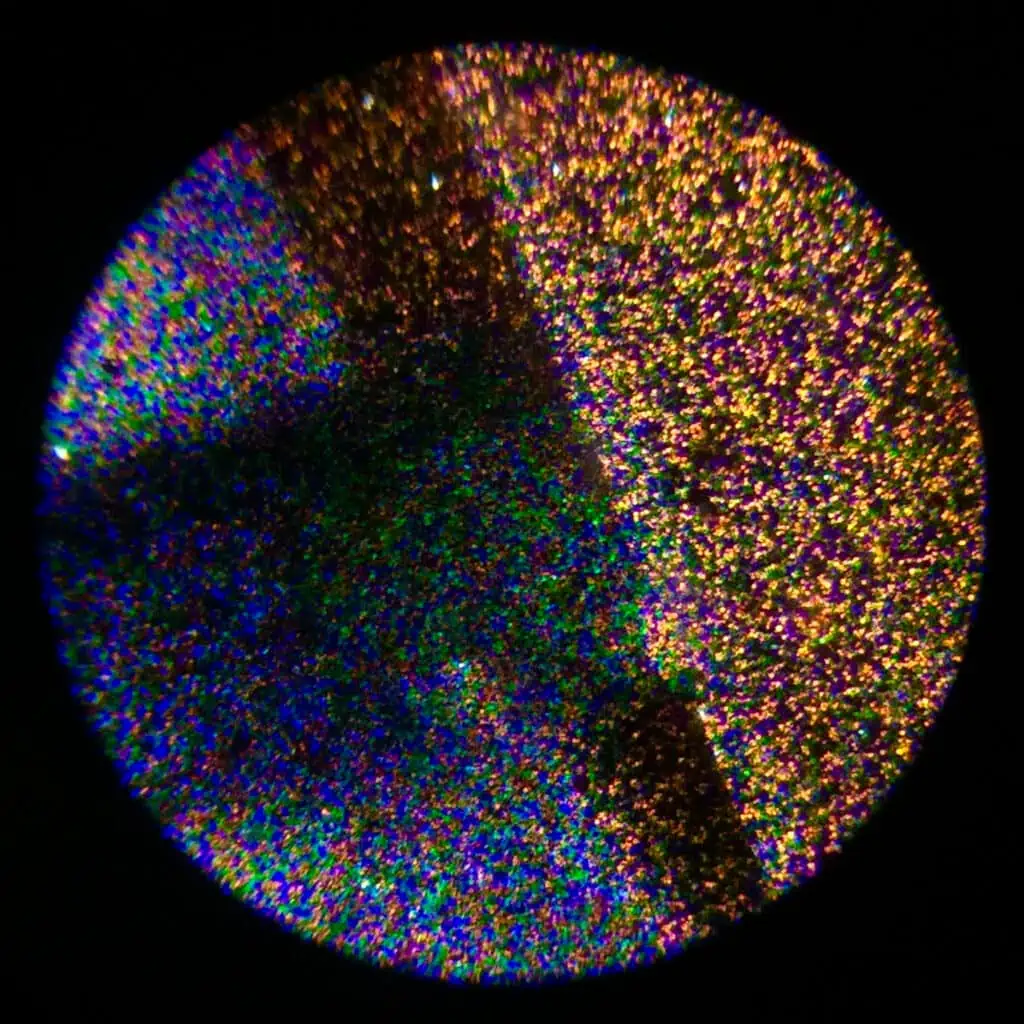
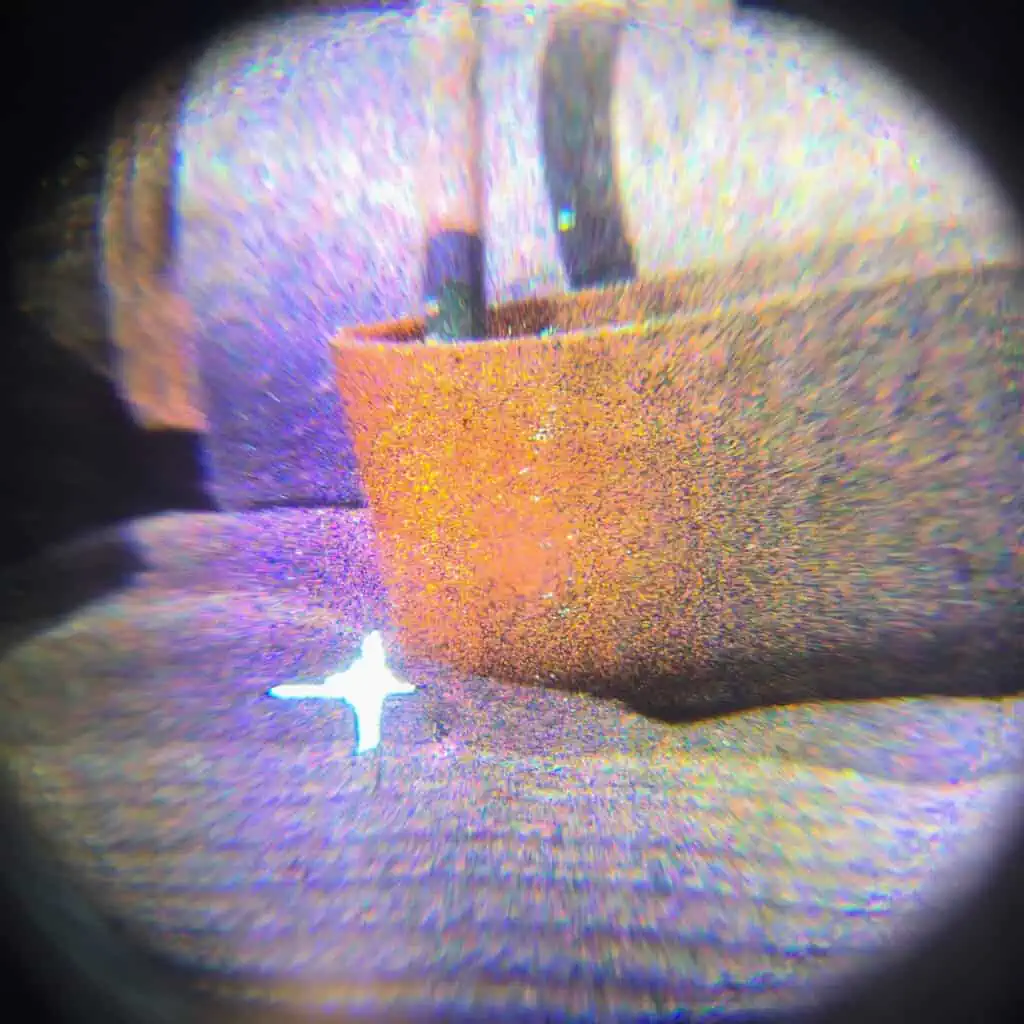
After the arrival of Kodachrome this technique got completely lost including more or less all the information about it. After almost 2 years I am still in the process of recreating the autochrome and slowly but surely I am getting there. I could go on for hours but let’s save that for another blog and get back to the unboxing. There were nearly 20 million plates sold but only a fraction of them is still unexposed. After talking to the guy who sent me the package I know there is only a single plate left in the pack so here is my strategy:
- I will take the original plate and try to shoot & develop it as it is following the instructions.
- If this doesn’t work I can still wash of the old emulsion and coart the coloured screen with a fresh one.
- And if even that won’t work I will at least have the original coloured screen to compare to the screens I make + the box which will go on a shelf.
So yeah that’s my plan and I really hope at least of the first two options will work. To conclude this blog I would like to thank Zoran from Paris, France for sending me this package filled with Lumiere goodies. He is a living proof that there are still some really, really nice people out there!
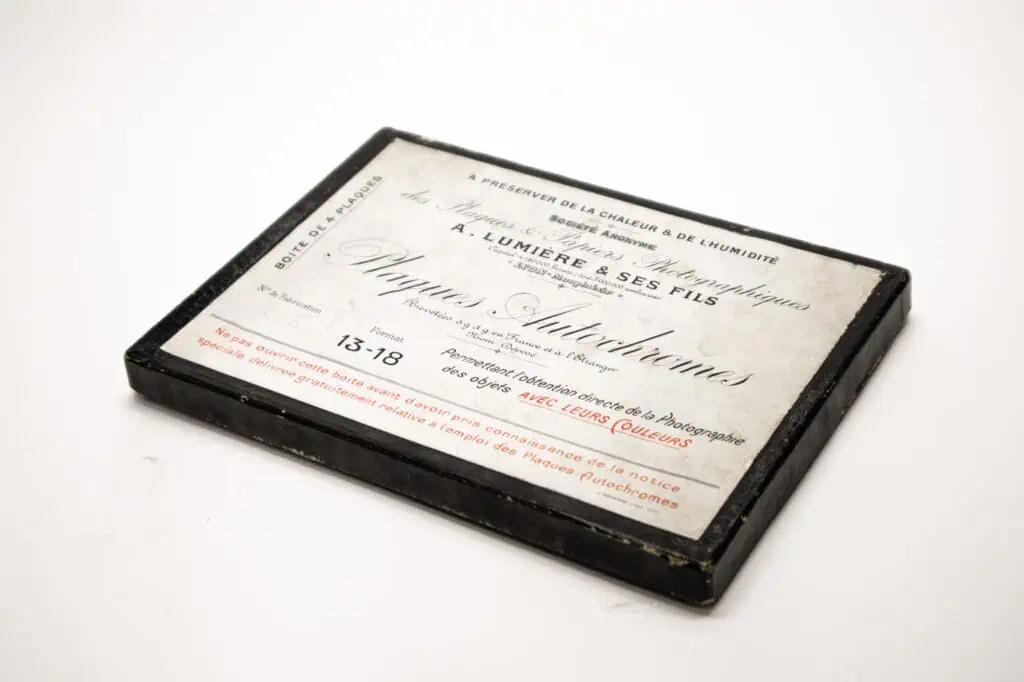
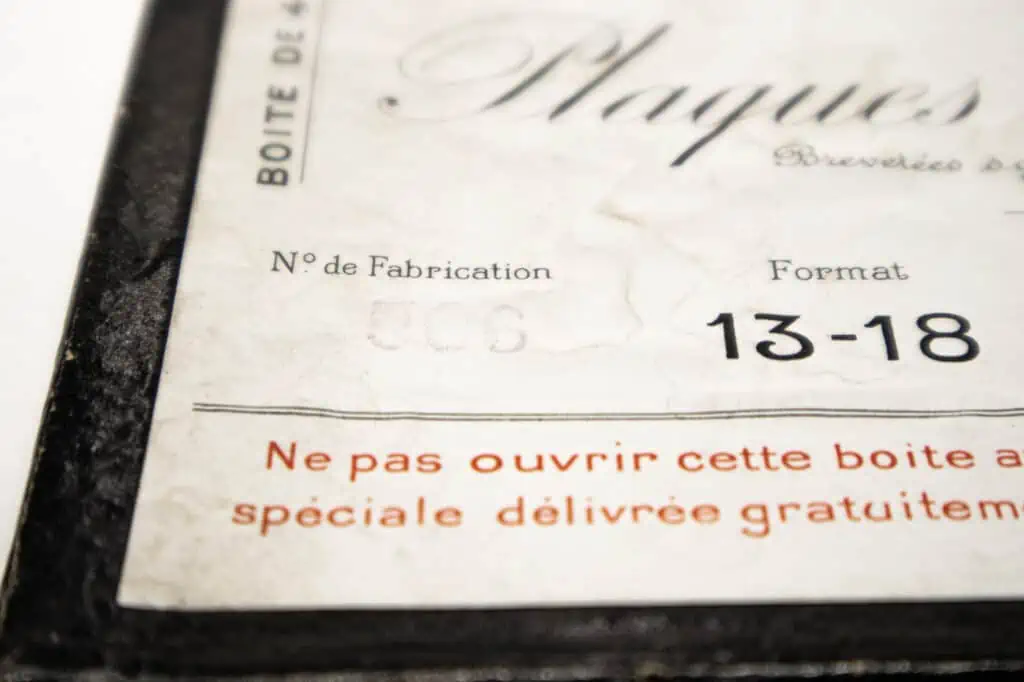
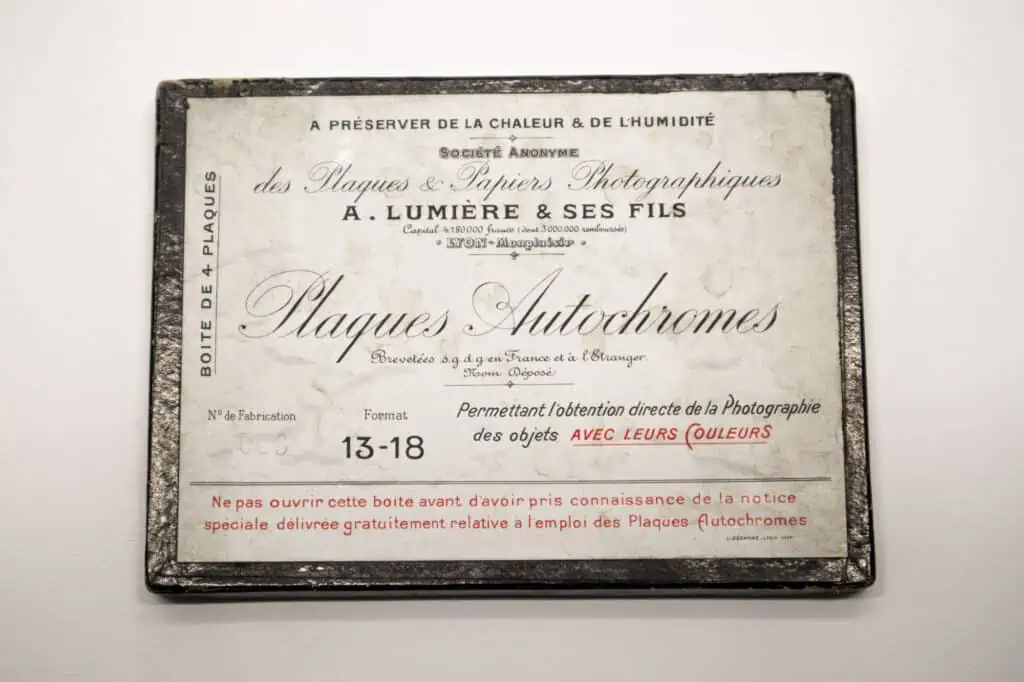
Video of me opening the packages

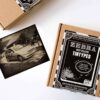

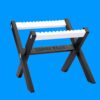
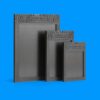
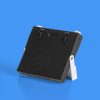
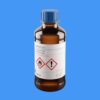
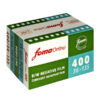
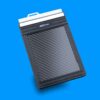
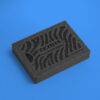

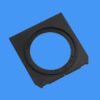
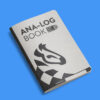

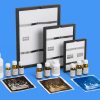
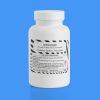
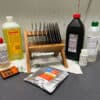
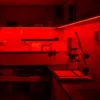
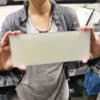
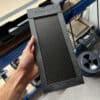
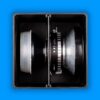
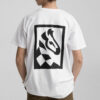
Hello, I have found a box of Lumiere sigma dry plates
Could you contact me?
Thank you.
Patricia